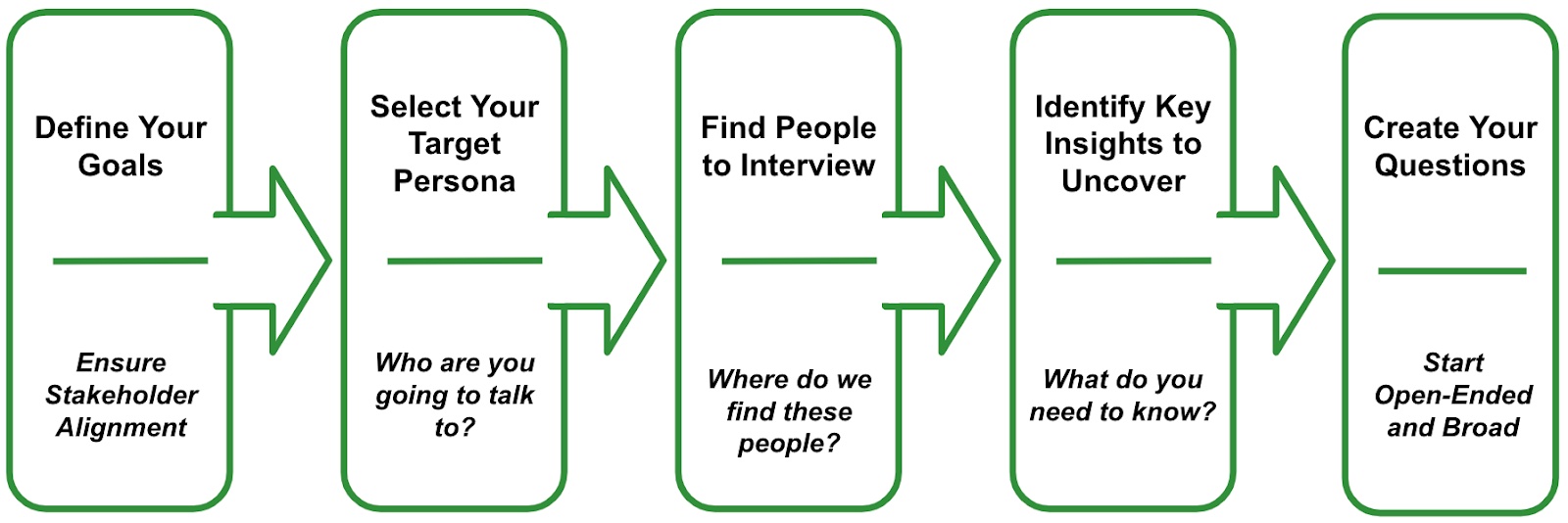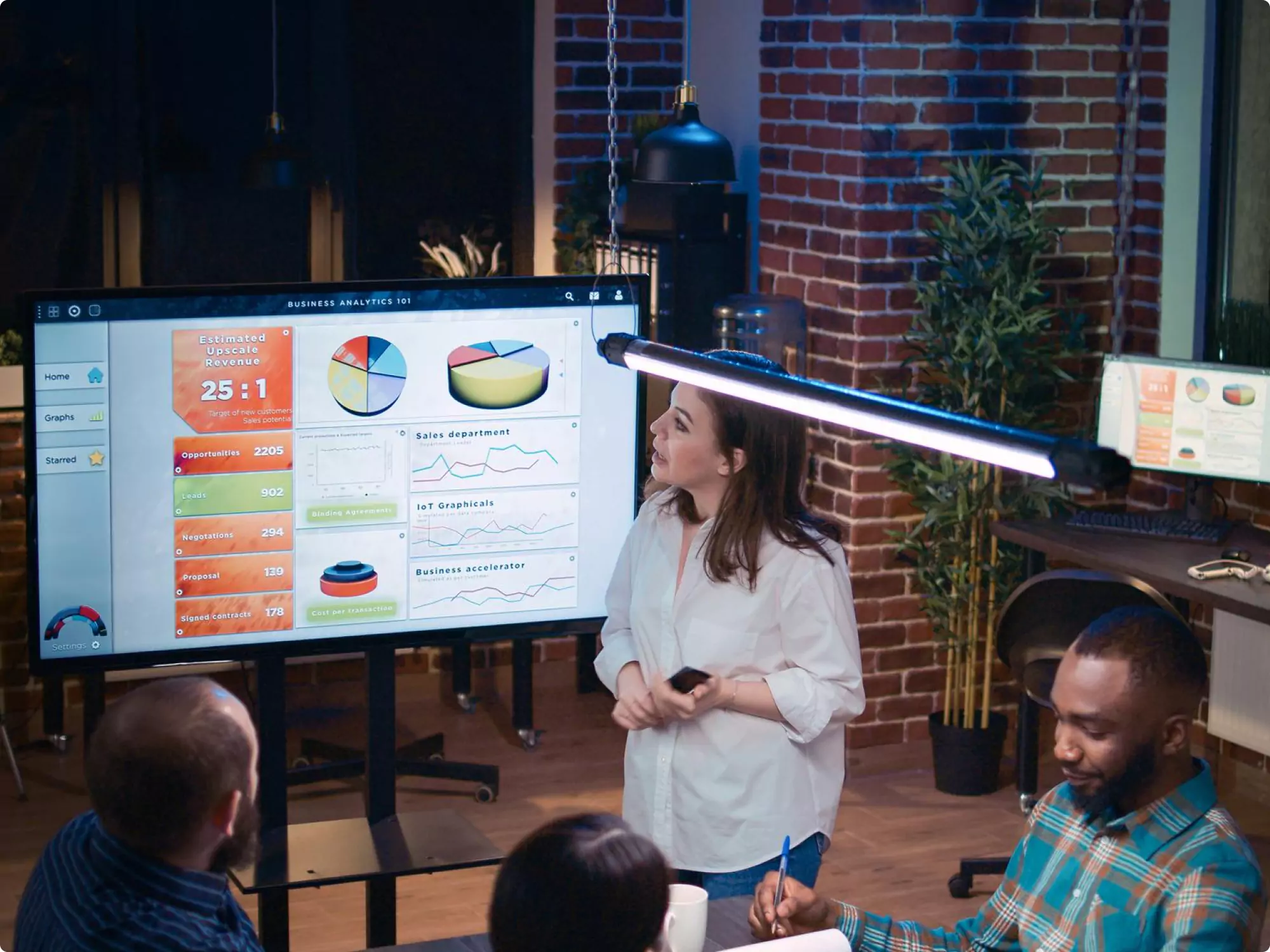You need to ask the right persona questions if you want to truly learn about your target customers.
For many B2B software companies, persona interviews are one of the best ways to get meaningful insights about their users and buyers. But to get the most out of them, you need a clear plan for how you will use the answers.
To help guide you through this process, we’ve created the persona interview framework, which you can download from our Fuel platform. By asking the right persona questions and working through each step of the process, you’ll be on the path to gaining key insights into your target audience and putting that information to good use within your business.

What Is a Persona?
A persona is a set of profiles that reflect the needs and pain points of a specific segment of your audience.
Two common types of personas are user personas and buyer personas. In some cases, your users may actually do the buying, but often these two types of personas will be quite different. For example, a developer might be your user, but the CTO would be your buyer.
User personas are best at helping to define and prioritize your product roadmap and the user experience of your product or service. The key focus here is on understanding how your products will help users solve problems, reduce headaches or simply do their jobs.
Buyer personas, on the other hand, are really about understanding the process companies go through when purchasing your products, which business problems they’re solving and demonstrating value to each of the people involved. Buyer personas are often best for aligning positioning, messaging, sales processes and your overall go-to-market strategy.
How to Find People for Persona Interviews
The easiest way to learn about your target audience is to spend time speaking with the people in your company who work with them every day.
While this shouldn’t take the place of asking actual persona questions in interviews, getting up to speed on known characteristics of your users and buyers will prepare you to make the most of each conversation you have. Your sales, customer success, support and product management teams can also direct you towards the best contacts to reach out to for interviews within your existing customer base.
Of course, you shouldn’t limit your interviews to existing customers. Non-customers offer an alternative perspective that might help you break into new markets. There are many ways to connect with non-customers, though you may need to consider compensating them for their time.
Below are a few ideas for where you may be able to connect with non-customers:
Online communities: LinkedIn is the obvious choice, but other more industry-specific groups may prove even more valuable.
Industry conferences can be a great place to meet people, perhaps even informally. Remember, an interview doesn’t need to be “official” to count.
Partner conferences are great, because you can probably predict at least some of the products other attendees use and will have some common ground to connect.
Persona Interview Framework
Start asking the right persona questions.
Download the free framework from our Fuel platform.
Click Here
How Many People to Interview
There is no exact number of persona interviews that should be conducted for any project. This number could be as low as seven or eight interviews or as high as 20. The more insights you uncover tends to be better, but if you feel like you don’t have enough consensus after conducting 10 to 15 interviews, then you may want to consider creating a survey to get insights from a larger number of people without using up too much more of your time.
The Goals of Your Persona Questions
Before you start writing actual persona questions, it’s a good idea to think about the top three to five key insights you need to learn. You’ll likely end up with many more questions, but your time in each interview is limited.
Key areas you may want to focus on include:
- What are the key responsibilities of this person’s job?
- How do they currently perform the functions that your product or service provides?
- What are the biggest challenges they face in their job?
- What are this person’s strongest job skills?
- What are their biggest weaknesses?
- How technically savvy is this person?
- What is this person’s impression of the product or service you provide?
- What benefits would they expect from your product or service?
- What concerns do they have about trying this the first time?
- Are the expected benefits valuable enough to overcome their concerns?
- Where should we promote our products and services to reach our target audience?
Now that you’ve determined which areas are most important to learn about, you can begin creating persona questions to uncover these details in your interviews.
These interviews tend to be most successful when conducted as a natural, free-flowing conversation as opposed to simply going through a list of questions. But you should still have a set of questions available to guide you through the discussion.
When creating questions, a best practice is to structure each one as open-ended, starting with higher-level questions about each topic and drilling in as necessary based on the response.
9 Persona Questions to Ask
Examples of persona interview questions include:
- Could you explain the steps you take to perform your job today?
- What are the biggest challenges you deal with in your role?
- What kinds of experiences have you had with similar products or services in the past?
- What tools or products do you use every day to perform your job?
- Which of these tools do you like the most? Why?
- Which of these tools do you dislike? Why?
- If your company purchased our product or service (or a similar one), how would you expect it to help you in your job?
- What might make you hesitant to use this product or service?
- Where do you typically go to learn about best practices or new products?
Once you’ve finished creating your questions, you’ll be well prepared to start interviewing people that fit your profile. If possible, try to record each discussion so you can focus on listening and asking insightful follow-up questions as opposed to taking notes.
By using your persona questions as a guide, you should be able to touch on the most important points. As you listen to your recorded interviews later on, you can add notes for each question based on the person’s response.
For more guidance on creating personas, download our full interview framework from Fuel.



